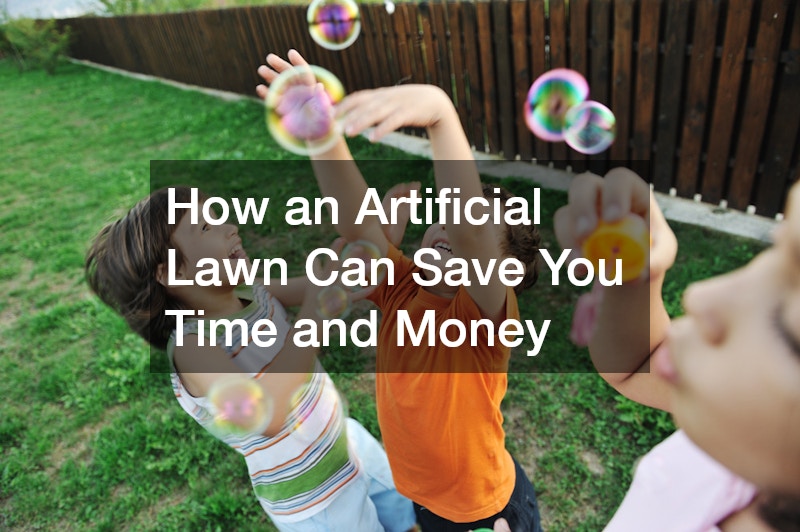Maintaining a beautiful yard can feel like a never-ending chore for many homeowners. Regular mowing, watering, fertilizing, and weed control take up valuable time and cost a significant amount of money over the years. As people search for easier and more cost-effective landscaping solutions, installing an artificial lawn has grown in popularity. Unlike natural grass, which requires continuous attention, synthetic turf provides a low-maintenance alternative that can still look lush and inviting year-round.
The benefits of this type of landscaping go far beyond appearances. By reducing the need for lawn care services, conserving water, and avoiding costly upkeep, homeowners can experience meaningful savings over time. Beyond financial advantages, an artificial lawn also offers peace of mind by freeing up weekends and eliminating the frustration that often comes with natural grass maintenance. This option creates both practical and long-lasting value for families, busy professionals, or anyone looking to simplify their outdoor spaces.
Reducing Maintenance Efforts
Traditional grass lawns demand consistent upkeep. Mowing every week, applying fertilizers, controlling pests, and reseeding patches all require time and energy that could be better spent elsewhere. Even with the best care, natural grass can still fall victim to unpredictable weather, creating brown spots or thinning areas that require even more attention. By contrast, artificial turf eliminates these labor-intensive tasks, allowing homeowners to enjoy a green and well-kept yard without the stress of constant maintenance.
In practical terms, an artificial lawn removes the need for weekly mowing schedules, expensive lawnmower upkeep, and trips to the garden store for fertilizers or weed control products. Instead, maintenance is limited to the occasional rinsing and brushing to keep the blades standing upright. For households that juggle busy routines, this reduction in effort can feel like gaining extra hours each month—time that can be devoted to leisure, family, or other home projects.
Lowering Water Consumption
Watering a lawn consumes a surprising amount of resources. During the hotter months, natural grass requires frequent and heavy irrigation to stay green, which can cause water bills to spike dramatically. In regions with common drought restrictions, keeping a lawn alive can become nearly impossible without breaking conservation rules or straining local supplies. An artificial lawn solves this problem by staying vibrant and green without a single drop of irrigation.
The long-term impact on water savings is significant. For example, homeowners in dry climates may reduce their household water usage by thousands of gallons per year simply by switching to synthetic grass. This saves money and contributes to sustainable living practices, which are becoming more important as communities face water shortages. By making the switch, families can take comfort in knowing that their beautiful lawn is not putting additional strain on local resources.
Minimizing Long-Term Costs
At first glance, some may hesitate at the upfront investment of installing an artificial lawn. However, the savings become clear when compared to the recurring costs of maintaining natural grass. Lawn equipment, fuel, fertilizers, pesticides, and professional landscaping services add up quickly. Over several years, these expenses can far exceed the initial installation cost of artificial turf.
For homeowners looking at their budgets, the numbers tell a compelling story. A one-time installation cost can translate into a decade or more of reduced expenses. Instead of paying monthly for services or supplies, homeowners enjoy predictable savings that grow year after year. By removing these ongoing costs, an artificial lawn becomes a convenience and a smart financial decision that pays off over time.
Enhancing Year-Round Appearance
One of the biggest frustrations with natural lawns is their inconsistency. Weather patterns, soil conditions, pests, and foot traffic can all leave grass looking patchy or dull, especially during the colder months. An artificial lawn, however, provides a consistently vibrant and manicured look no matter the season. Homeowners can enjoy a flawless green yard year-round, whether it is the middle of summer or the dead of winter.
This year-round beauty is especially valuable for families hosting gatherings or simply enjoying outdoor time. Guests are welcomed into a neat, attractive space that requires no last-minute touch-ups. Parents with children or pets also appreciate the durability of synthetic grass, which stands up to heavy use without wearing thin. The consistent appearance not only improves the enjoyment of the space but also adds to the home’s overall curb appeal.
Increasing Home Value
Curb appeal plays a significant role in a home’s value, and a well-kept lawn is often one of the first things people notice. An artificial lawn adds a polished, attractive look that signals low maintenance and long-term beauty to potential buyers. For homeowners considering selling in the future, this feature can be a selling point that sets the property apart from others in the neighborhood.
Beyond first impressions, prospective buyers will likely see synthetic turf’s financial and practical benefits. Knowing they will not have to spend time and money on lawn care may make a property more appealing, particularly to busy families or individuals wanting a turnkey outdoor space. As a result, investing in an artificial lawn can provide returns not only through savings but also by boosting the overall marketability and value of a home.
An artificial lawn offers a practical solution for homeowners who want to save time and money without sacrificing beauty. Removing the need for regular mowing, watering, and fertilizing provides a more sustainable and affordable approach to landscaping. The reduced maintenance efforts, lower utility bills, and long-term cost savings all add up to create a yard that is easier to manage and more enjoyable to use.




